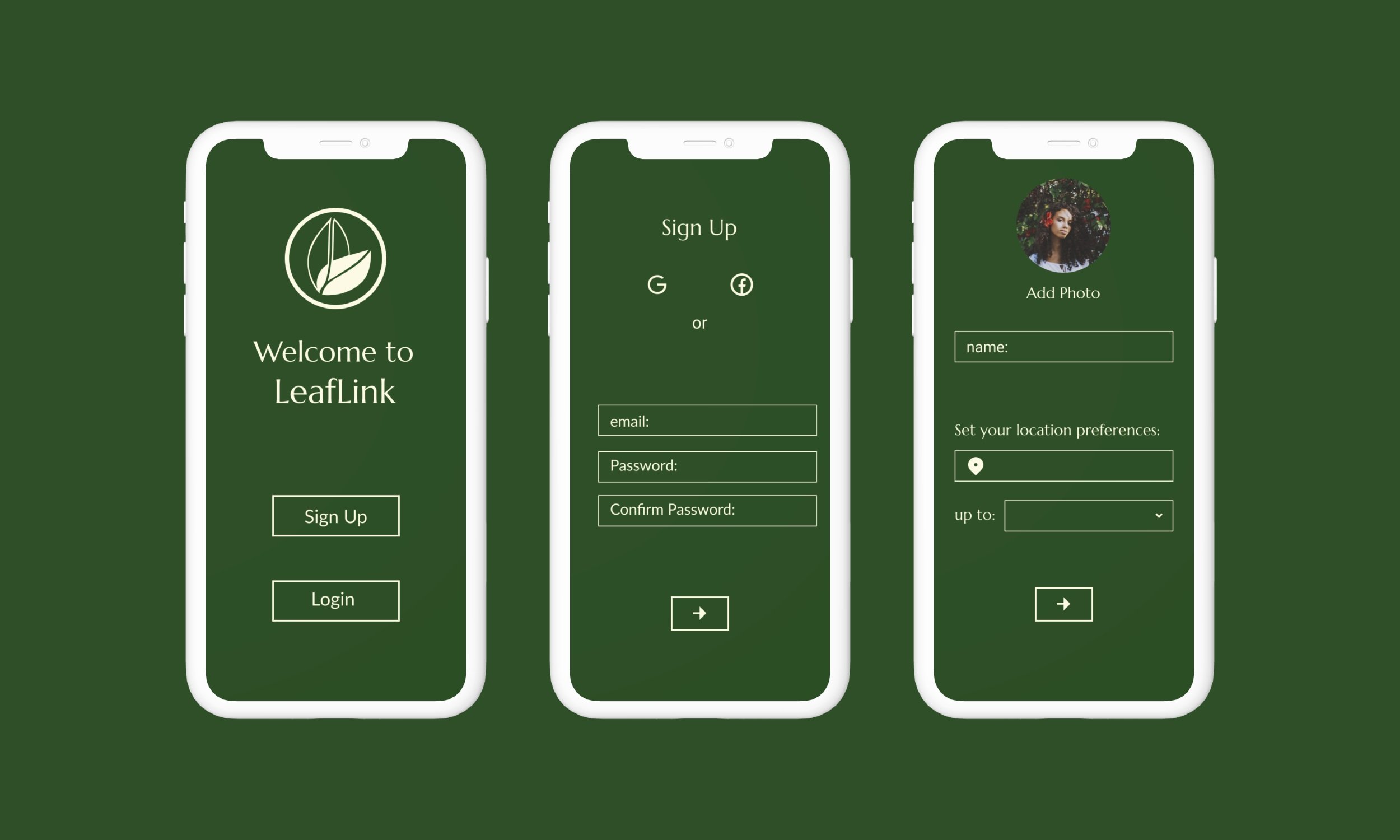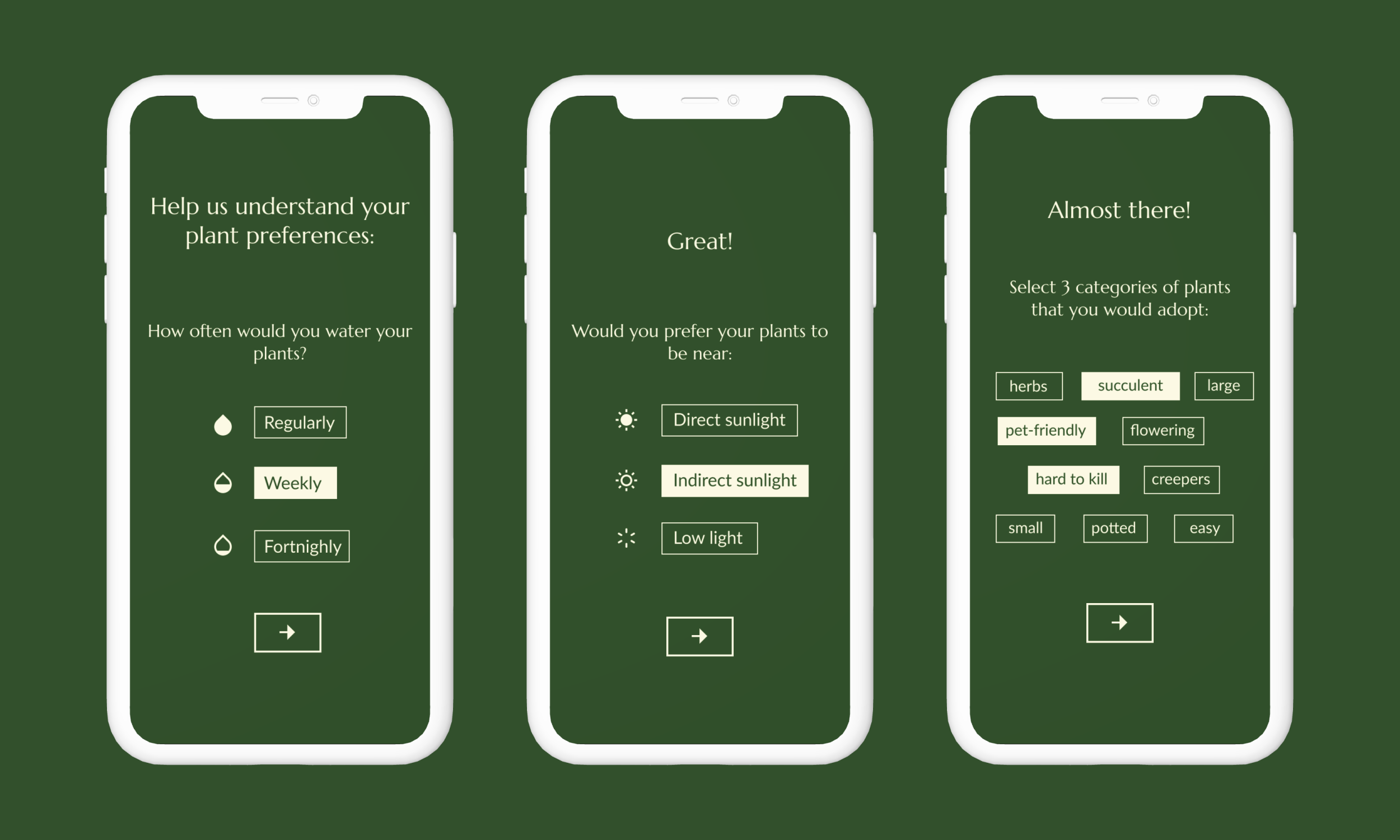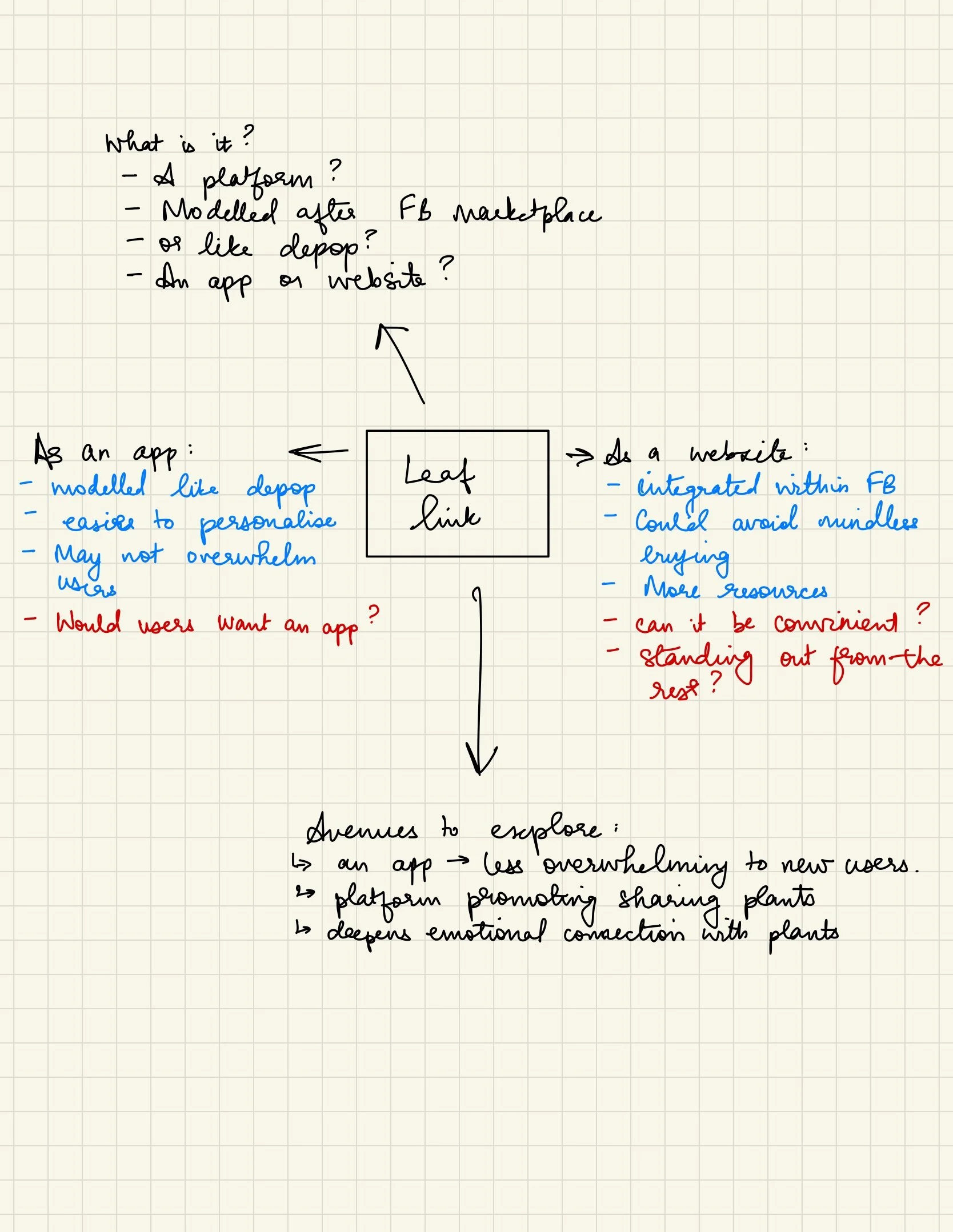LeafLink has one mission- to help everyone have a green thumb, but sustainably. Their app allows users to ‘adopt’ propagated plants; reducing the demand for new plants, allowing new plant parents to test the waters without killing the green (leaves and money).
Goals:
Emphasising sustainability through the app by filtering results as per the users preferences.
Designing a cleaner user journey for listing and adopting a plant.
Encouraging the user to personalise their search though setting preferences.
My role:
User research- secondary resource analyses, user interviews and surveys.
Usability testing
Wireframing
Prototyping
Discover
Roots of LeafLink:
Imagine this: it’s the year 2020. Everything is shut. You need something to distract yourself from all that is happening in the world. What do you do to fill in that emotional void? While everyone has different answers, many people resorted to ‘mass purchasing’ houseplants. While many nurseries and plant stores remained closed, 2020 saw the biggest boom of new online plant stores. Moreover, there was also the rise of a selected few subscription based services like BloomBox, LeafEnvy, etc. Naturally, when lockdowns all over the world were lifted, what happened to these plants? Will they be receiving the same love and attention? May be and may be not. What about people who just have a lot of plants? People who would be moving to new houses, states, countries? And what about people who want to start the plant parent journey? This is where LeafLink comes in. Adopting propagated plants, or even new plants, is a more sustainable option as it not only helps to relax the strain in supply of houseplants, but also allows new and current plant owners to practice and build an emotional connection with their plants before they can commit to more.
What makes the overconsumption of houseplants unsustainable:
-
Social media’s obsession with trends which are always short-lived, are unsustainable not only for consumers but also producers. This is especially true for plants, when the new trendy plant overtakes your Instagram feed, fuelling supply, until it is no longer in trend.
-
The carbon footprints from production, to shipping, to transportation are massive! Think about the electricity it would take in greenhouses to maintain proper temperatures. Additionally, think about the fertilisers, water, packaging, transportation… it is an added amount of CO2 emissions in every step, multiplied by the massive demand of houseplants.
-
The water used not by us, but by the oligopoly of houseplant farmers in the US. A concentrated few suppliers of houseplants use about 1.5 million gallons of water to grow massive rows of houseplants
*Links:
https://www.vox.com/22611799/houseplants-environmental-impact-youtube
https://www.respira.ca/blogs/news/supply-of-and-demand-for-houseplants-during-covid-19
https://www.greenhousemag.com/article/state-of-the-industry-report-on-the-up-and-up/
https://www.greenhousemag.com/article/state-of-the-industry-report-on-the-up-and-up/
Explore:
Through social media, I asked 8 potential users who follow #plantparent to see if they’d be interested in sharing their insights about their plant buying habits. Their answers had me mind-mapping potential ways in which LeafLink can create a change and stand-out. Below are what I believe are important insights from the users that inform how LeafLink can create a change:

The above insights got me asking whether there could be a product or service to help combat the overconsumption. The mind-map below, was how I gathered all my thoughts, which then blossomed into LeafLink:
Ideate:
The mind-map gave me seeds of what I can do with LeafLink:
It would be an app, a platform for adopting and sharing plants.
It would cater to users that are new plant parents and allow the emotional connection with plants to flourish.
It could become the first place users go to “adopt, not shop” for plants
From the mind-map above, I worked on LeafLink as an app that allows users to “adopt” plants from plant owners. Below are the wireframes, where I explored potential user journeys as I sketched:
I then took to Figma to design the low fidelity wireframes to test out:
Testing
The 8 participants from the original survey were then invited to test out the low fidelity screens. I had asked them to perform the following 3 tasks:
Set up your profile
Add a new listing for a plant, adjusting the light and water, and giving it appropriate tags
Select a plant you’re interested in and message the user
Over Zoom, as I observed them going through the tasks, I asked them to rate the tasks from 1 to 5, 1 being ‘Very easy’ and 5 being ‘Very difficult’ to perform. I also asked to give me their thoughts about the app in their own words.
Below are the most insightful comments the participants had after this initial usability test:

Revision:
From the insights after the first user testing, I began to revise the screens:
Final screens:





A few leaves from my mind:
I believe I learnt a lot from this project. This project is something I want to be able to grow. From an UX perspective, I believe there can be more ways in which LeafLink can be the first place plant lovers go to adopt plants. One of the main caveat is that there are places which have wonderful nurseries, but LeafLink addresses the “adopt, not shop”. Supporting small businesses is a must, and hopefully, family-run nurseries can be a part of LeafLink too!


















